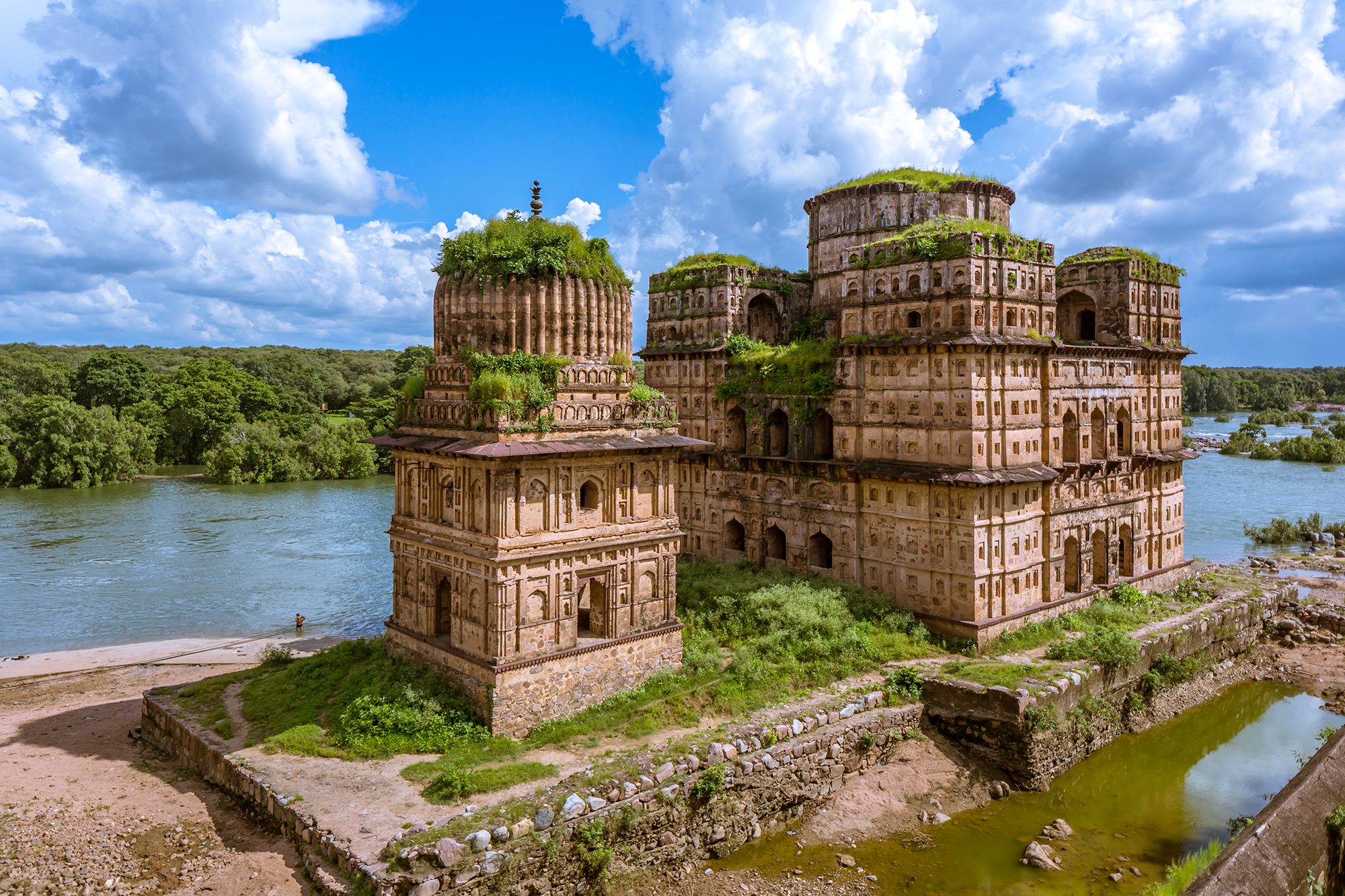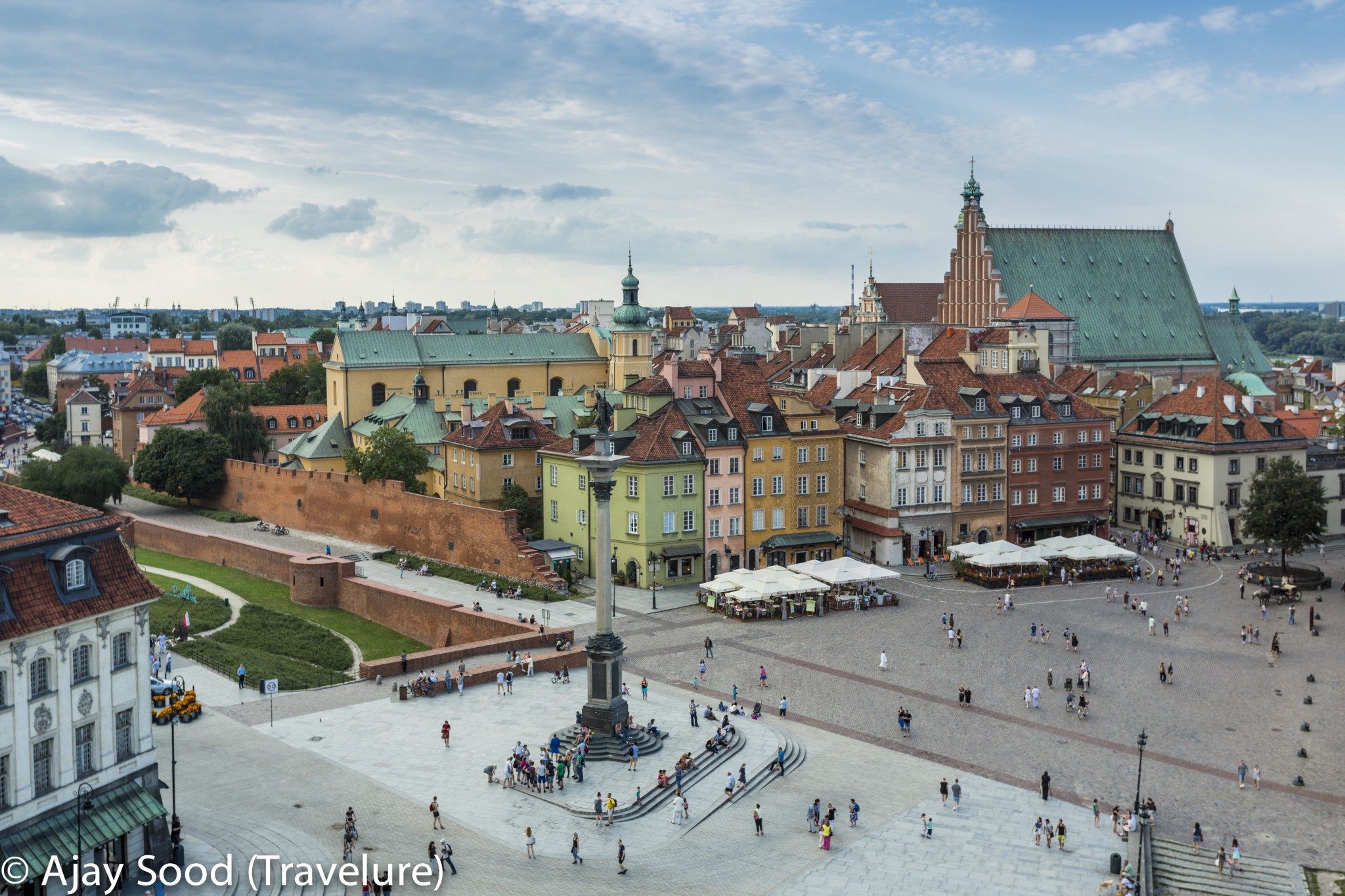January 2017 issue of JetWings, the in-flight magazine of Jet Airways (Domestic Sectors), carried my photo-feature. I am reproducing the photo-feature as it appeared. I am also following it through with the detailed story I had sent for publication that was not carried owing to space constraint.
Orchha – A Chance Discovery
Take a pictorial tour of this offbeat destination that is dotted with impressive examples of Bundela Architecture in the heart of India.
The historic town of Orchha lies nestled on the banks of River Betwa. It was founded in the 16th century by the Bundela Rajput chief, Rudra Pratap. For those visiting today, the ancient town seems frozen in time with its many monuments continuing to retain their original grandeur. Orchha truly is a hidden gem, here you can explore some fascinating structures – from the intriguing and serene Ram Raja Temple, and the Jahangir Mahal that was built in honour of the Mughal Emperor Jahangir to the Laxmi Temple that exhibits a unique architectural style which is a mix of a fort and a temple, and the famed chhatris, cenotaphs that were constructed in honour of its erstwhile rulers.

I had vaguely heard of Orchha. Monsoons were almost over. The weather was kind. So, I decided to do a road trip to check out this obscure destination.
Driving out early from Delhi, I reached Orchha before noon. While it is just about 20 km from Jhansi (Uttar Pradesh), Orchha is actually a part of District Tikamgarh in Madhya Pradesh.
Check-in and a few quick enquiries later, I stepped out to explore this seemingly sleepy town. I had little idea of what to expect. During my short walk to Orchha Palace, my guide shared a few interesting bits of trivia.
Orchha means ‘Hidden’
Orchha, a colloquial word for ‘hidden’, was a small erstwhile province on the banks of River Betwa. During the Mughal era, Bundela Chiefs ruled it. Bundelas got their unique name as their Ruler used to offer drops of blood to the deity. This practice got the clan christened as Bundelas (boond or bund = drops, and hence boondela/bundela).
In the afternoon, Orchha almost seemed like a ghost town with few people around. My guide explained that the town’s population was only around 25,000. Since it was off-season, not many tourists were around. He went on to share that during tourist season, the town gets hordes of visitors, especially from Germany and France, as Orchha was quite popular amongst them.

Once inside the palace, I found myself admiring a combination of Mughal and Rajput architecture. The Diwan-e-Aam seemed like a smaller version of Red Fort’s Diwan-e-Aam. Rani Mahal had ceiling murals, similar to some Havelis in Rajasthan. Besides Raja Mahal (King’s Palace) stood another, equally imposing Jahangir Mahal that had a central courtyard as its centrepiece. I was genuinely perplexed seeing two adjoining grand palaces.
Bundelas and their brush with Mughal Royals
Seeing my puzzled looks, my guide shared an interesting anecdote. He told me about how Bundelas and Mughals crossed paths a few centuries ago.
Prince Salim, before he became known to the world as Emperor Jahangir, had his differences with his father, Emperor Akbar. He had one thorn in his side – Akbar’s biographer and Vizier (Prime Minister), Abul Fazl. Bir Singh Deo, the contemporary of Salim, beheaded and sent the head of Abul Fazl to Salim.
This gesture earned Bir Singh a strong friendship with Salim, and also, the resultant Mughal patronage. This friendship could be a possible explanation of the Mughal architectural influence. And the Mughal patronage could explain the access to funds needed for building such grand structures.

From the roof of the majestic palace, I could spot a gleaming white temple. Guide told me it was Raja Ram’s temple. He went on to share that Orchha is the only place where Lord Rama is not worshipped as a God, but as a king. There is another majestic sandstone temple next to it – Chaturbhuj Temple.

Bundela Cenotaphs
As I glanced to the left of these temples, some imposing structures caught my eye. Those were the famed ‘chhattries’ (cenotaphs) of Orchha. Hurriedly finishing the palace tour, with my guide in tow, I made my way to these stunning architectural beauties.
Located on the scenic bank of River Betwa, there are 14 cenotaphs in all. While most of them have a relative profile similarity, there is one that is distinctly different – Raja Bir Singh Deo’s cenotaph. This 3-storeyed cenotaph has an exit that leads straight to the river. It was thus built with a belief that the king could have a bath in the river as often as he wants in his afterlife.

After spending a leisurely couple of hours here, I set out for the farthest attraction of Orchha – the Lakshmi Temple. While its dome looks like that of a temple, its peripheral wall bears a distinct similarity to a fort. It provides for cannon slots to fire at the enemy.
There was no idol inside as it had been stolen, but it had a sacrificial platform. Such platforms are normally seen in temples of the Tantric cult. This temple is slightly away from the main town but was definitely worth the visit.

There is more to Orchha than meets the eye
Next morning, while I was leaving Orchha, I spotted another gem – Kranti Sthal. This lesser known memorial has been erected in memory of famed freedom fighter – Chandra Shekhar Azad. A bronze statue of his trademark pose – twirling his moustache – adorns this memorial. The official here told me that Chandra Shekhar Azad had used the forests of Orchha for shooting practice, and that was why his memorial was erected here.

While I spent just a night here, I was surprised at the heritage treasure trove Orchha offered me in such a short time. I could not stay longer, but I was told there was more to see here. There is a famous dam close by – Mata Tila Dam. Its reservoir is a birding spot. Also, once you cross the fragile bridge and go across the river, there is also a wildlife sanctuary that is inhabited by some minor wild animals.
In conclusion, I can earnestly say that Orchha proved true to its name. The name means ‘hidden’ and for most travellers, this gem is truly hidden. It is now time they discovered it and started exploring it.



















Breathtaking photographs. May I know what camera you used to click them?
Very interesting read too.
I always enjoy reading about lesser known places in India. Thank you.
Thanks, Shaly! I shoot with any camera that I travel with – but mostly Canon’s 5D Mark III.
Wonderful photographs.. and a lovely read
Thank you, Amrita!